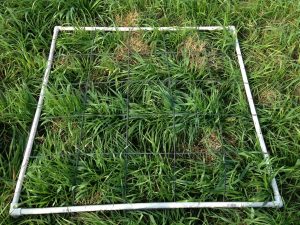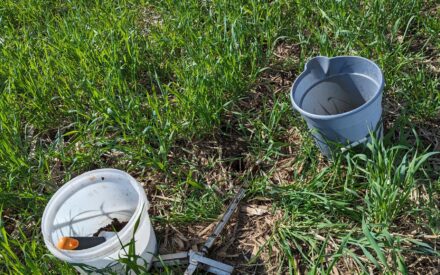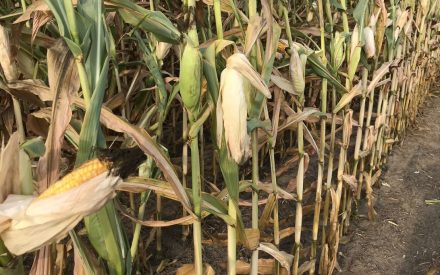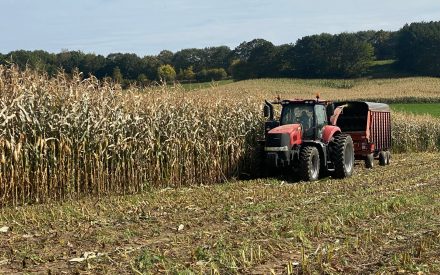Annual and perennial ryegrasses are excellent cool-season forages that make for a good addition to a pasture mix. Although they are called ryegrasses, they are different from the small grain grass rye.
Ryegrasses did not originate in temperate areas like to those of Minnesota, Wisconsin and Michigang but from milder climates in Europe, Asia and north Africa. Thus, for the upper Midwest they should not be recommended for all conditions as these grasses prefer cool summers and they have low tolerance for cold winters. Nevertheless, they complement the growth of very cold adapted grasses like bromegrass, Kentucky bluegrass during the less cold periods including the cool-summers. Ryegrasses are adapted to soils that are neutral to slightly acidic, moist and have moderate to high fertility. They have poor tolerance to heat and drought. Under ideal cool weather (50 to 75°F) and moist soils, ryegrasses establish rapidly, provide good yield in the seeding year and are superior to other grasses in terms of forage quality and digestible fiber, qualifications that makes them a popular option among grazing dairy operations. Following is a description of the ryegrass species.
Annual ryegrass

Annual ryegrass (Lolium multiflorum) is a bunch grass with an extensive, shallow, fibrous root system native to northern Italy where it grows as a short perennial or a biennial. In the upper Midwest it grows as an annual because of the cold winters, and is favored as a late spring/early summer grass because of the cool summer conditions. Annual ryegrass responds well to applications of N, and the shallow root system makes it attractive for erosion control. Annual tonnage in Wisconsin can averaged 4.13 tons/acre, with some varieties reaching 10 tons/acre.
Perennial ryegrass
Perennial ryegrass (Lolium perenne) is used mainly for pastures and is a predominant grass in northern Europe and New Zealand, which are also characterized by mild winter and cool, moist summer similar to climates from its center of origin in Europe, Asia and North Africa. In the upper Midwest is less persistent than other cool season grass species due to the low cold tolerance. In northern Michigan, Minnesota and Wisconsin it should be used for grazing or hay or haylage in mixtures with red clover where the snow cover will make 3-yr stands likely assuming no extreme cold weather. Annual tonnage is similar to annual ryegrass with averages over 4 tons/acre.
Ryegrasses, annuals or perennials, can tolerate continuous stocking, they perform better under rotational stocking or flexible stocking options. You may start grazing at 8 to 12 inches in height, and graze it very low. It can tolerate short defoliation with a recommended stubble height for grazing or haying of 2-3 to 4 inches
Ryegrasses have quick germination, usually between 7 to days. They are excellent candidates for frost seeding, which can be done in March into closely grazed paddocks. In terms of the type of seed to select for pastures, there are several options and these include characteristics like type of maturity, ploidy level, and disease resistance. There are early and late maturities on the market for either species. Earlier and later maturing are usually blend to increase the growing season. When mixed you will have some plants that will come up early and some that will come up later. If using only one type, late maturing ones will maximize the growing season for the upper Midwest.
In addition to maturity types, you can select ryegrasses that are either diploids or tetraploids. Diploid varieties have two sets of chromosomes, while tetraploids have four. Tetraploids in general are larger in size with wider leaves and they tend to be more winter hardy; however there are many diploids varieties with excellent traits.
Ryegrasses are susceptible to common diseases like crown rust (Puccinia), red-thread (Laetisaria fuciformis), dollar spot (Rutstroemia floccossa), brown patch (Rhizoctonia solani), gray leaf spot (Pyricularia grisea), and Pythium blight but many resistant cultivars are available.

 ▶ AI in Agriculture
▶ AI in Agriculture ▶ Evaluating MRTN Rates for Corn Grain and Silage After Manure Application
▶ Evaluating MRTN Rates for Corn Grain and Silage After Manure Application ▶ Practices to Optimize the Nutritive Value of Corn Silage
▶ Practices to Optimize the Nutritive Value of Corn Silage ▶ Explore the New Corn Silage Dry Down Monitoring Tool
▶ Explore the New Corn Silage Dry Down Monitoring Tool


